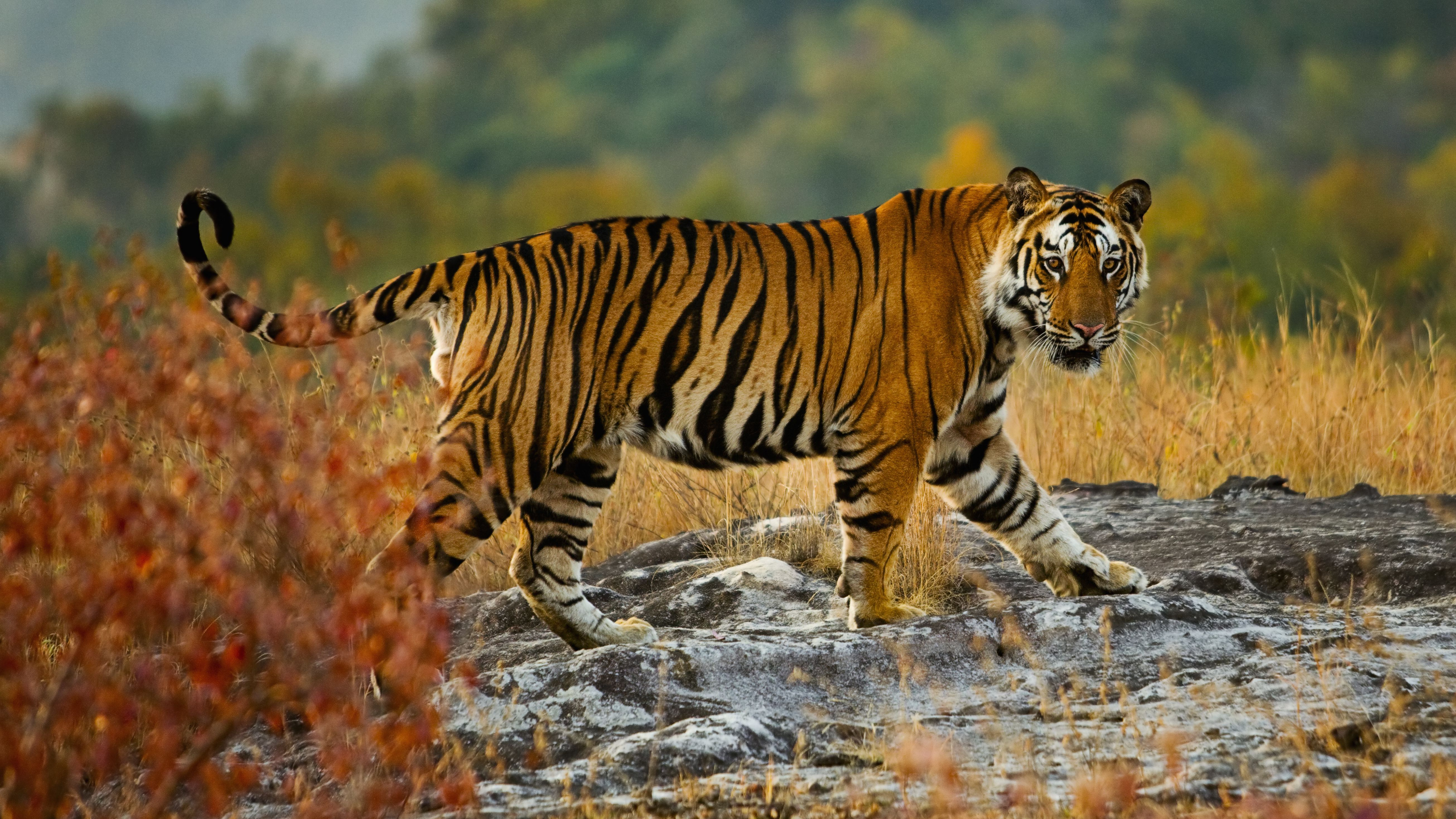
Tigers are one of the most magnificent and awe-inspiring animals on the planet, revered for their strength, beauty, and mystery. They inhabit a wide range of environments, showcasing their incredible adaptability. Understanding the diverse habitats where tigers roam is crucial for their conservation and the preservation of the ecosystems they dominate.
Tigers are primarily found in Asia, stretching from the dense forests of Siberia to the tropical rainforests of Indonesia. Each habitat presents unique challenges and opportunities, shaping the behavior and physical characteristics of the tigers that live there. The most iconic tiger habitat is perhaps the dense jungle, which provides ample cover and abundant prey. These forests, such as those found in India’s Sundarbans and the Terai Arc Landscape, are teeming with life. The thick vegetation offers tigers the perfect camouflage to stalk their prey, while the rivers and water bodies ensure a steady supply of water.
In contrast, the Bengal tigers of India and Bangladesh are often found in mangrove forests, a unique ecosystem where the land meets the sea. The Sundarbans mangrove forest, the largest of its kind in the world, is a critical habitat for these tigers. Here, tigers have adapted to swimming and navigating through the intricate network of waterways. They prey on fish, crustaceans, and even the occasional deer, showcasing their versatility as apex predators. The challenging environment of the mangroves has led to some of the most fascinating adaptations in tiger behavior and hunting strategies.

Moving northwards, the Siberian tiger, also known as the Amur tiger, inhabits the temperate forests of Russia’s Far East. This region, characterized by harsh winters and deep snow, presents a stark contrast to the tropical habitats of their southern relatives. Siberian tigers have developed thicker fur and a layer of fat to insulate against the cold. Their large paws act like snowshoes, enabling them to move stealthily through the snow. The sparse population of prey in these forests means Siberian tigers must cover vast territories, sometimes up to several hundred square miles, to find sufficient food. Their primary diet consists of deer, wild boar, and occasionally smaller mammals.
Tigers are also found in the subtropical and tropical rainforests of Southeast Asia, including countries like Thailand, Malaysia, and Indonesia. These forests are lush and humid, offering a different set of challenges and opportunities for tigers. In these regions, tigers often inhabit the lower mountain slopes and valleys, where prey is abundant. The thick canopy and undergrowth provide excellent cover for ambush hunting. Tigers in these habitats prey on a variety of animals, from small mammals and birds to larger ungulates like deer and wild pigs.

The Indochinese tiger, found in Cambodia, Laos, and Vietnam, primarily inhabits evergreen and semi-evergreen forests. These forests are characterized by their year-round green foliage, which supports a rich biodiversity. Indochinese tigers are adept at navigating the dense underbrush, using their stealth to approach prey closely before launching a surprise attack. The complex terrain of these forests requires tigers to be highly agile and adaptable hunters.
In addition to these primary habitats, tigers can also be found in grasslands and savannas, particularly in India and Nepal. These open habitats offer a different hunting experience for tigers, where they rely more on speed and power than stealth. The tall grasses of these regions provide some cover, but the open landscape means tigers must often chase down their prey over longer distances. Prey in these habitats includes deer, antelope, and wild cattle, which are plentiful in these fertile areas.
Despite their adaptability, tigers face numerous threats across their range. Habitat loss due to deforestation, agricultural expansion, and urban development is a significant challenge. As human populations grow and encroach on tiger territories, the available habitat for these magnificent creatures continues to shrink. This fragmentation of habitats not only reduces the area where tigers can live and hunt but also isolates populations, making it difficult for tigers to find mates and maintain genetic diversity.
Conservation efforts are crucial to preserving tiger habitats and ensuring their survival. Protected areas, such as national parks and wildlife sanctuaries, play a vital role in providing safe havens for tigers. Initiatives to restore degraded habitats and create wildlife corridors are also essential to connect fragmented landscapes, allowing tigers to move freely and maintain healthy populations. Community involvement in conservation is equally important, as local people play a crucial role in protecting tiger habitats and reducing human-wildlife conflict.

International cooperation is also necessary, given that tigers cross national borders and require large territories to thrive. Transboundary conservation efforts, such as those between India and Nepal, help protect and manage tiger populations that roam across borders. Anti-poaching measures, stringent law enforcement, and public awareness campaigns are vital components of successful tiger conservation strategies.
In conclusion, tigers inhabit a diverse array of environments, from the dense jungles and mangrove swamps of South Asia to the cold forests of Siberia and the tropical rainforests of Southeast Asia. Each habitat presents unique challenges and opportunities, shaping the behavior and physical characteristics of the tigers that live there. Despite their adaptability, tigers face significant threats from habitat loss and human activities. Conservation efforts that focus on protecting and restoring these diverse habitats are crucial for ensuring the survival of this magnificent species. By working together, we can help preserve the rich tapestry of ecosystems that tigers call home and secure a future for these iconic animals.